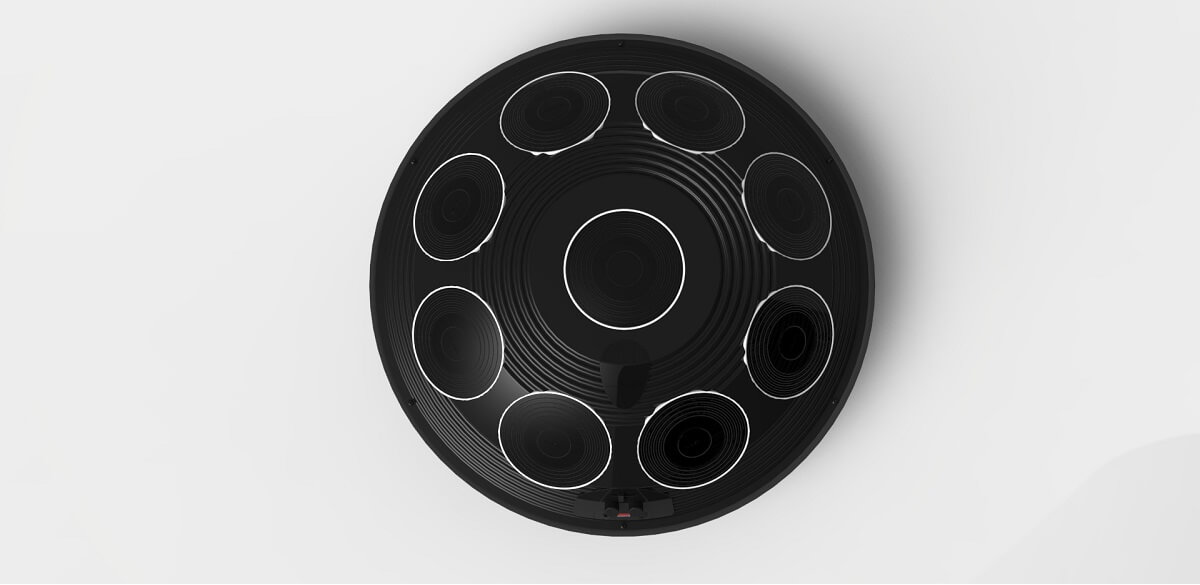Innovation time: Get to know the music technology of the future, Part 2
It’s tech hunting season once again. Don’t you love the smell of fresh innovations in the morning (or at whatever time you are reading this)? I wasn’t lying when I said in the previous article that I dedicate an unhealthy amount of time to digging through crowdfunding sites. But can you blame me? It is a catalogue of human innovation, progress and, let’s say it, weirdness. I personally find it fascinating that so many people can actually make their musings and ideas come true. Also, it further solidifies my belief that science is amazing, if you use it for good, of course.
Follow me on another journey into the depths of technological development and innovation that can potentially transform our understanding, comprehension and use of music. Or will just cost us a lot of money. Let’s find out.
‘A’ Speaker
What is it?
It is pure magic. Seriously, it is like taken from a science fiction novel and made true. I personally would love to encounter an ‘A’ Speaker in the wild just so I can see that it actually works. It is a speaker that directs sound in such a way that only you can hear it. You see? I told you it sounds unbelievable. As it says on the Indiegogo campaign it is like you are using headphones, but without the headphones. The creators compare the sound beam to a laser, which targets a particular spot and does not disperse it to the surrounding area, thus eliminating sound pollution from too many people listening to too many different things all at once. Sounds a bit alienating? You see – even more proof of its sci-fi nature.
How does it work?
Apparently, what it does is produce ultrasonic waves which are then transformed into audible sound waves. And then science magic happens:
“The primary beam is generated by transposing the audio signal into the ultrasonic domain. This primary beam is then emitted by the loudspeaker, propagates in the air and self-demodulates to reconstitute the audible audio signal.”
All of this sounds great, but how does sound stick to its specific straight path, without dispersing everywhere? Here is Akoustic Arts’ answer:
“Well, because of the self-demodulation effect that appears on each point of the primary beam, the demodulated waves act as a virtual array, interacting with each other inside a secondary beam that keeps the same directivity properties than the ultrasonic primary beam.”
And now we know.
If all this scientific mumbo-jumbo has not convinced you that this “A” Speaker actually works as it claims it does, here is a demonstration:
How is it doing on Indiegogo?
‘A’ Speaker has been 640% funded with less than 24 hours to go until the end of their campaign. Pretty amazing I have to say, I guess people are more than eager to close themselves off in their own personal sound bubble. Is this sad or considerate? What do you think? Share with us in the comments how you feel about this Music Innovation of the Future.
If you speak French you can stay on top of news relating to the ‘A’ Speaker by following Akoustic Arts’ Facebook page.
Lumen: electric handpan
What is it?
Do you know what this world needs? An electric handpan. Without it, our existence seems meaningless. Thank God for developer Guy Jackson who is bringing this unique instrument to the masses, allowing a greater number of musicians and music enthusiasts to create beautiful sounds at a fraction of the cost. Lumen is an electro-acoustic handpan, with built-in speakers you can play anywhere at any time (perhaps to the delight or annoyance of those around you).
A quick research shows that ‘handpan’ is the collective term for instruments resembling or inspired by the Hang – a percussion instrument developed in Switzerland back in the year 2000. Depending on how it is played, it can sound like bells, harp or steelpan. As it turns out handpans are very expensive and difficult to obtain, so Lumen has the potential to be a very affordable solution.
Here is some beautiful music played on a handpan by Yuki Koshimoto:
How does it work?
Lumen will closely resemble the acoustic handpan and will provide all the benefits that technology brings along. It will have a set number of sample sets for musicians to start off with and in the future additional sample sets available to download. One of Lumen’s greatest features is that it does not need to be connected to a computer or other device to work, as it has built-in high-quality speakers and 4-hour-playing battery. Of course you can plug it into an outside source using the audio jack. Lumen can take on the role of any instrument thanks to its MIDI port. And just like the acoustic version, the Lumen is very sensitive to the speed and strength with which you play it.
How is it doing on Indiegogo?
Currently, at a month before the end of its campaign, it is 111% funded with 172 backers, most of which have pre-ordered Lumen at a lower than retail price. Hopefully, this means that more and more musicians will take up the art of the handpan and we can expect an abundance of beautiful music coming our way. We can only hope.
Follow Lumen’s journey on Facebook.
At Drooble you can find people with a passion for unusual instruments and technological developments within the world of music. Don’t miss out on the chance to connect with them and share your ideas, develop your musicianship or just create some great music.




